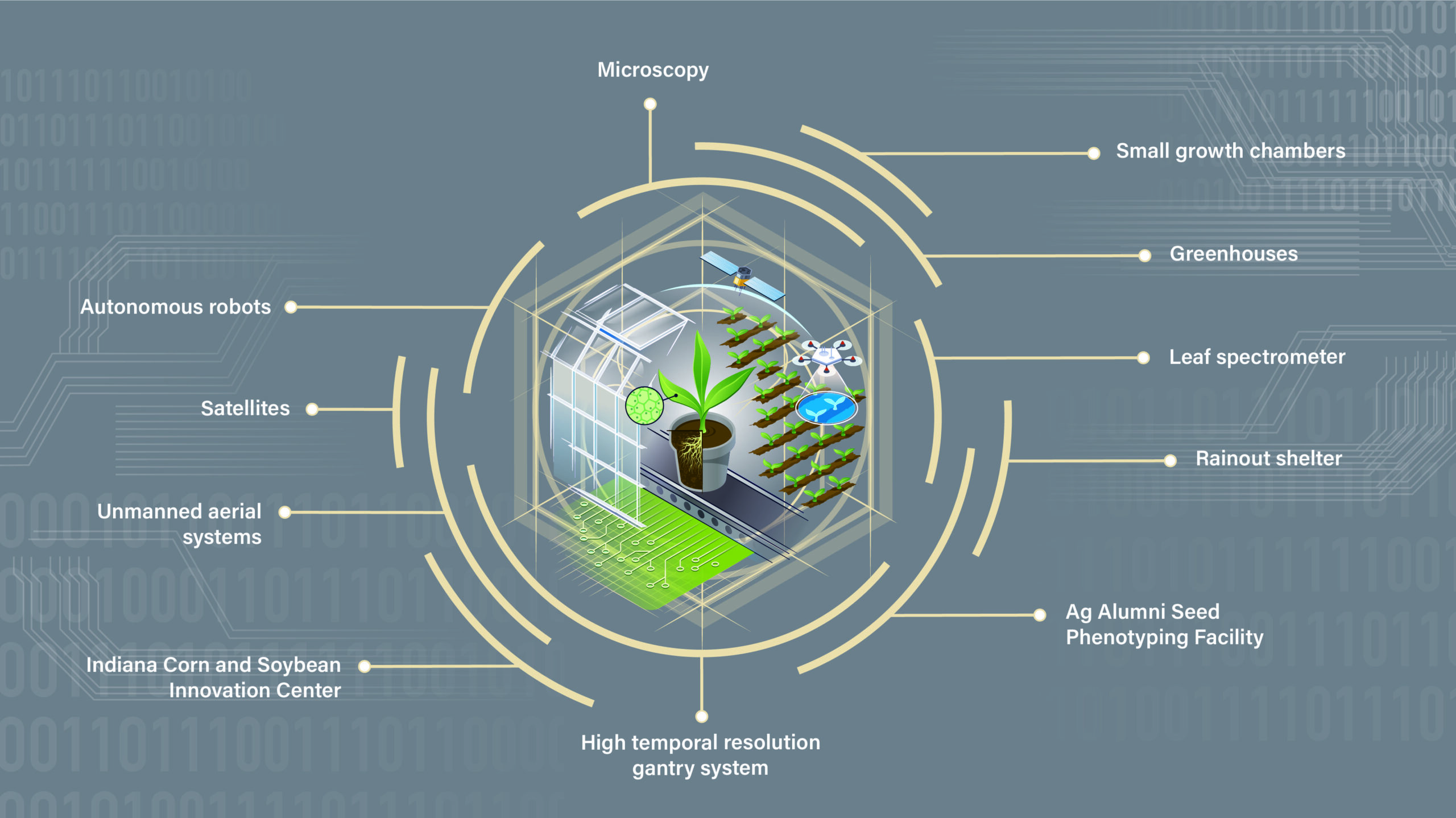Multiscale Phenotyping
We can determine the genetic makeup of a plant in a lab. But the real-world environment influences the expression of genes, impacting its physical appearance and performance. Phenomics is the science of measuring and analyzing these physical characteristics after a plant interacts with its environment.
Cutting-edge technology allows us to gather and analyze huge amounts of real-time, high-quality phenotypic data. Faster data collection and analysis means better insights into crop improvement, as scientists modify desirable plant traits for better climate adaptation, crop yield, nutrition, and weed and pest control. This is key both to sustainability and reducing environmental impacts.
Purdue has invested in phenotyping technology across multiple scales to become a national leader in phenomics and part of a global community to accelerate digital agricultural innovation.
This continuum of technologies at Purdue is driving plant sciences research from the lab to the field, in Indiana and around the world.

Microscopy
A gentle way to record 3-D images of sensitive specimens or fast biological processes, such as root growth, to show how different phenotypes behave.
This continuum of technologies is driving plant sciences research from the lab to the field, in Indiana and around the world.
Small growth chambers
Controlled environments for smaller plants in smaller numbers. Designed for botanical and agricultural studies in Purdue Agriculture departments, bringing plant pathology and plant genetic research into the classroom.
Greenhouses
Belt conveyor and imaging systems provide a consistent environment and eliminate outside stressors for all plants in greenhouses, growth rooms, growth chambers and laboratories.
Leaf spectrometer
A handheld meter with sensor technologies developed at Purdue that precisely measures a plant’s growth and nutrition status within a few seconds and generates a farm field’s nitrogen, drought and yield prediction maps to a smartphone app.
Rainout shelter
Key to keeping natural precipitation off research plots, removing it as a variable, and to managing water inputs to study the interaction of plants with soil and water.
Ag Alumni Seed Controlled Phenotyping Facility
Cutting-edge phenotyping facility opened in spring 2018 to run plant experiments under precise environmental control. Its full range of sensing capabilities from RBG to hyperspectral to non-destructive root imaging, combined with Purdue's capabilities in the field, drives Purdue's global leadership in plant phenomics.
VISIT THE AAPF WEBSITEHigh temporal resolution gantry system
Expands sensing capability to collect high temporal resolution data and develop algorithms that facilitate the translation of data collected from the controlled environment to those from the field. The first in the U.S. in terms of its intended use and sensor configuration and algorithms.
Indiana Corn and Soybean Innovation Center
One of the nation’s first and largest phenotyping facility for even greater sensing capability and a hub of phenomic research for plant breeders, engineers, computer scientists, and aviation scientists. Home to the gantry, the PhenoRover (mobile ground platform with custom sensing array) and unmanned aerial vehicles.
VISIT THE ICSC WEBSITEUnmanned aerial vehicles
Unmanned aerial vehicles (UAV) have become crucial to field diagnosis by carrying sensors that improve the precision, efficiency and depth of information. Purdue Extension and Purdue Agriculture are leading Indiana's way in technology outreach through the agricultural use of UAVs.
LEARN MORE ABOUT UAV USESSatellites
Distinctive in the toolbox for crop phenotyping, satellite-based imaging can cover vast areas.
Autonomous robots
Purdue is finding ways to noninvasively image plants using robots. Researchers are using autonomous robots to noninvasively image roots and better understand field crops from under their canopy.
